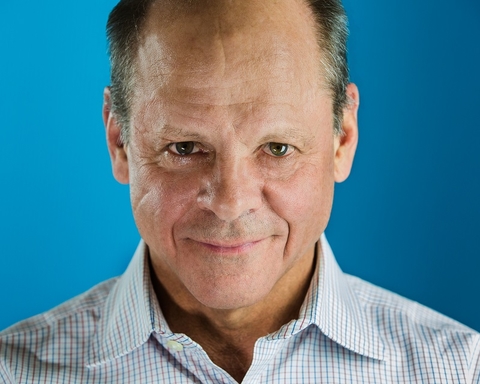The rather sudden departure of Gogo CEO Michael Small and the selection of longtime director and investor Oakleigh Thorne as his replacement has prompted some speculation the in-flight connectivity provider may be looking to sell, in part due to concerns about its ability to execute in the deployment of new technology.
The company announced the executive change on Monday after Small and the board of directors reached a “mutual decision” for Small to step down. The company didn’t say it’s considering a sale but pointed out that Thorne led two previous companies that ultimately were sold—eCollege.com and Commerce Clearing House.
Ronald T. LeMay, chairman of the Gogo board and a former Sprint executive, said the board conducted a “comprehensive search process” and determined that Thorne is the best person to help Gogo “achieve our next phase of growth.”

In his prepared statement, Thorne said one of his four priorities is driving shareholder value. “We are highly confident in our ability to achieve our strategic and financial objectives as we improve execution and realize our significant growth opportunities,” he said.
The company’s statements provide some indication that it might at least consider a sale or merger with someone else, according to Tim Farrar, founder of TMF Associates. “It’s a tough business and they are sub-scale” compared to big satellite operators and big in-flight entertainment providers like Panasonic and Thales, suggesting such a move might make sense.
As for who might be in the market for buying, people might speculate about Amazon, Netflix or even Delta if it wanted to take the in-flight Wi-Fi internally. But Farrar said it would be an expensive purchase for anyone, making it too much of a stretch for Inmarsat or a company like that.
To be sure, Gogo has run into its share of challenges. American Airlines more than two years ago decided to switch hundreds of domestic aircraft from Gogo to ViaSat, and more recently, an internal Delta Air Lines memo indicated that Gogo’s 2Ku installations were running into problems due to deicing fluid getting into the antenna and preventing it from working.
Gogo COO John Wade alluded in the company’s fourth-quarter earnings call to “early stage growing pains” with 2Ku installs and modem upgrades where some aircraft saw degraded reliability. “We identify the root cause of all these issues and have fixed this for all of them that have either been deployed or in the process of being deployed,” he said, according to a Seeking Alpha transcript. “By midyear 2018, we expect the entire 2Ku fleet to operating the same market leading performance levels that most 2Ku aircrafts are now achieving. We are clearly established [in] our ability to retrofit our in-flight systems.”
Looks to me like an attempt will be made to sell the company. But who would be a buyer when Panasonic & Inmarsat have their own IFC challenges? Satellite sector is not a good place to be a CEO right now $GOGO pic.twitter.com/D5lsaZZtg4
— Tim Farrar (@TMFAssociates) March 5, 2018
On a broader scale among consumers, Gogo didn’t earn a lot of confidence when its earlier technology didn’t work as advertised. The Air to Ground network has been overloaded and slow for several years, Farrar noted.
“They’re trying to change that with the switch to 2Ku, and delivering a lot higher bandwidth there and leasing a lot more satellite capacity to deliver a better service, but it takes a long time to change that attitude,” he told FierceWirelessTech. “Most people have thought in-flight Wi-Fi is slow and expensive and it doesn’t have to be, but it’s still challenging to deliver a good service, and it’s particularly challenging to deliver a good service profitably if you don’t own your own satellites and you have to lease lots of satellite capacity to deliver the service.”
Technology-wise, things are improving, but it’s unclear that it will happen fast enough to please investors. “What they’re trying to do is drive this transition in technology so that they can deliver a better service, but I think the investors are nervous about whether the new satellite technology really will deliver the high EBITDA margins that were promised given the cost of capacity and the amount they’re going to have to lease,” he said.
In North America, Gogo’s chief competitor is ViaSat, which has been winning a number of deals, including those American planes that are switching away from Gogo. That said, Gogo did win Alaska Airlines in the face of an aggressive challenge from ViaSat, Farrar noted.
RELATED: Gogo to use 2.4 GHz unlicensed for ground-based system
Internationally, the main in-flight players are Gogo, Inmarsat and Panasonic, but Panasonic has stepped back a bit due to concerns about making money on these services. Most of the competition internationally now is left between Gogo and Inmarsat, he said.
Overall, even though Small was typically upbeat and optimistic during earnings calls and other events, it continues to be a tough time for the satellite space.
There's a lot of debate at the FCC about the satellite industry's C-Band spectrum being reallocated to terrestrial; the good thing about that is potentially some of the satellite operators might benefit from the windfall from that spectrum, but “when one of the most exciting things in the satellite industry is that you’re selling your spectrum for some other use, that doesn’t say a lot about the industry itself,” Farrar quipped.
Small had been leading Gogo since 2010 and according to an SEC filing posted by StreetInsider.com, he agreed to step down on March 4. His separation agreement includes a payment of $58,333, a severance payment of $700,000, an additional payment of $250,000, plus reimbursement of up to $25,000 of his legal expenses in connection with the negotiation of the terms of his separation.